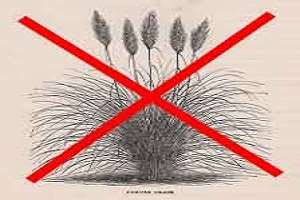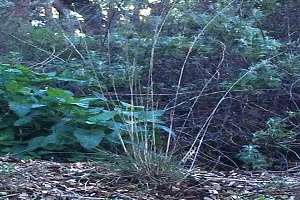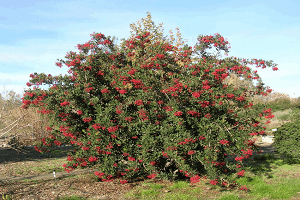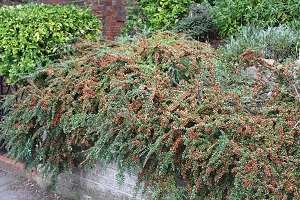By Kamille Hammerstrom
Most of the plants used in our gardens and landscapes do not harm or invade wild areas, but there are some species that have that potential. These plants, known as invasive species, can create monocultures, crowding out native plant communities (for example, yellow star-thistle), increase the danger of fires (e.g. Mediterranean grasses) and coastal erosion (ice plant, yuck!), and clog waterways (such as Eurasian watermilfoil, hydrilla), among other negative impacts.

It's important for us to do our part by avoiding the planting of species that may easily escape cultivation into nearby wild areas. In many cases it is possible to achieve a very similar look with native and non-invasive species. Here are a few suggestions for California native plants that can be used in the landscape in lieu of some common invasive species:
Deer grass (Muhlenbergia rigens) instead of pampas grass
Snowberry (Symphoricarpos albus) instead of English ivy
Wild rose (Rosa californica) instead of periwinkle
Golden currant (Ribes aureum) instead of Scotch or French broom
Toyon (Heteromeles arbutifolia) instead of cotoneaster

For more information on these topics, visit the following sites:
PlantRight is an organization that works to prevent the sale of horticultural invasive plants.
Wildfires can both promote invasive species and be promoted by them.
Eucalyptus can cause loss of biological diversity within its groves and produces lots of flammable debris.
Knowing what a plant's invasive status is can help you decide whether or not to plant it in your garden.
Researchers are learning to predict a plant species' invasion ability to prevent invasions before they occur.
Don't forget to subscribe to our blog so that you receive an email notification when a new post goes up. If you have questions, contact us online, by phone or in person to get answers to your gardening quandaries!

